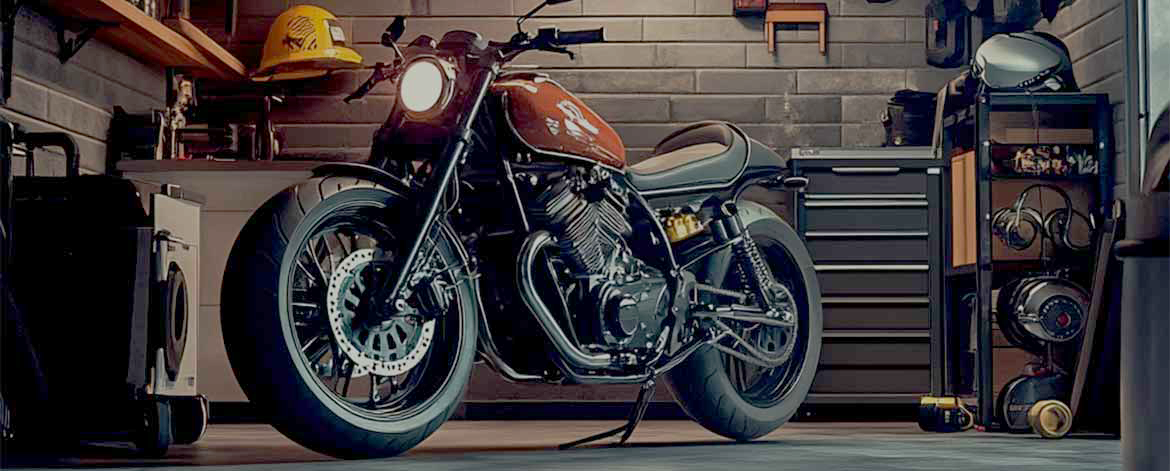
Consult the experts

Not everyone likes to ride their bike in winter, so it makes sense to store it properly. It’s not uncommon for some bikes, particularly newer models, to have special requirements if they are to be left for a long period of time. So first, check the manual to see if there is anything detailed in there, particularly regarding the battery and electronic systems.
A bath before bedtime

Give it a proper clean. Even if this is the bike you only use on dry, sunny days, you should still give it a thorough going over. Wash all over with a dedicated motorcycle cleaner, use a brush to get behind exhaust downpipes, and into awkward places. Really scrub all the dark places with cleaner and rinse off all traces off the cleaning agent.
Don’t forget the chain…

Make sure the chain is clean and dry. Treat it as an individual component with its own cleaning routine, using dedicated chain cleaning products. If it needs adjusting this is a good time to do it. Lubricate the chain carefully all over, take your time and give each segment of the chain the same amount of lube while taking care not to overspray onto other areas.
Time for a treatment

Apply an anti-corrosion product to your cleaned, dry bike. There are a fair few on the market now, of which ACF50 and XCP appear to be some of the best. Rather than spraying it directly on to the bike, put the solution onto a clean cloth then wipe the surface to be treated. Use it on any metallic or plastic surface – but don’t get it on the brakes or tyres!
Give it a raise

Find the best place in your storage location, away from foot traffic, and away from any leaky door or roof. Ideally, place the bike on stands so the wheels are raised off the ground. Doing this takes the weight of the tyres. Don’t have stands? Place mats under wheels.
Increase the pressure

If the bike is to be left on its sidestand, pump up the tyres harder than the stock pressures, to ensure they don’t deflate over time and damage the carcass. Go up 20psi and check every two months. Stick a note on the tank to remind yourself of the over-inflated pressures.
Connect the life support

Locate your bike’s battery and connect a conditioner. This will keep the battery at its peak condition. This is more necessary for a bike fitted with an alarm or tracker. If your battery is of the old type of lead acid, check the levels and top-up with distilled water.
Beat the freeze

Next check the coolant. To do this you will need an antifreeze tester, it measures the specific gravity and thus the effectiveness. Take the sample from the bike’s expansion tank. If it needs replacing follow the procedure in the workshop manual. Check the level, too.
Get properly secure

Now that you’re not using the bike regularly it’s time to make it as secure as possible, so consider adding another layer of security to whatever you use on a day-to-day basis. This could be buying and using a heavyweight Diamond standard lock and chain with a ground anchor, or even an extra lock on the garage door. The more you do, the safer your bike will be and the harder any potential thieves will have to work.
Keep it covered

Whether you’re storing indoors or outdoors, a good cover is essential to make sure your bike stays clean, dry and clear of accidental damage. Make sure the cover is tied down and fastened properly. Assuming you are storing the bike inside your garage or shed, don’t hide the battery charger under the cover because they usually have displays that indicate the status of the battery, so keep it to one side for monitoring purposes.




